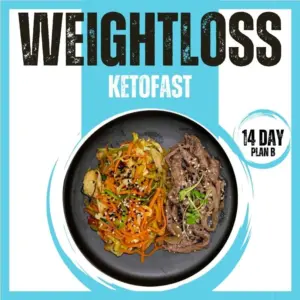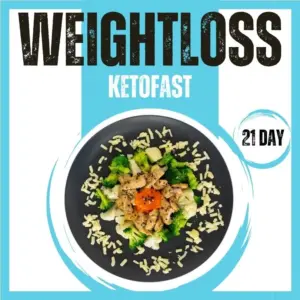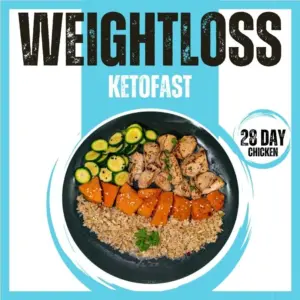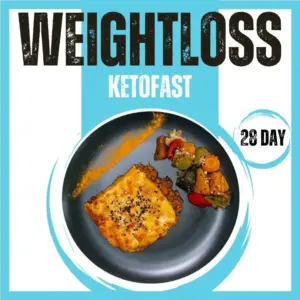The ketogenic diet (or keto diet, for short) is a low carb, high fat diet.
This high fat, low carb diet is based on drastically reducing carbohydrate intake and increasing your fatty food intake.
This reduction in carbs puts your body into a metabolic state called ketosis. When your body goes into ketosis, it will begin to use fat for fuel instead of carbs.
For most people, carbs are the body’s primary source of energy so when you drastically reduce your carb intake, your body will begin to burn through the carbs stored in your body (called glycogen). This usually happens within the first few days of starting the diet.
During ketosis your body becomes incredibly efficient at burning fat for energy, which makes the ketogenic diet an effective way to lose weight.

Benefits of the Ketogenic Diet
1. Reduced Appetite
Reducing your intake of carbohydrates (which is exactly what happens on the ketogenic diet) has a significant effect on your appetite. In particular, it has the ability to drastically reduce your appetite.
This is a game changer when it comes to following through with a diet or meal plan, because it can be difficult to stick to a meal plan if you are fighting off feelings of hunger all day.
2. Weight Loss
This is a diet which has the ability to promote weight loss in several ways. This is due to a boost in your metabolism as well as a reduction in appetite. Not only does this type of diet reduce hunger-stimulating hormones, paired with foods that are generally more filling.
3. Improves Blood Sugar and Insulin Levels
This is due to the reduction in processed and refined carbohydrates. These types of foods and ingredients usually cause insulin levels and blood sugar levels to rise and fall significantly which can have a negative impact on your health as well as your skin (this means improved acne as well!)
4. Improves Heart Health
This diet focuses on the consumption of high fat foods such as avocados and nuts in replacement of unhealthy fats such as pork rinds or bacon fat, which has the ability to reduce cholesterol levels. High cholesterol can potentially increase your risk of contracting cardiovascular diseases, therefore, reducing unhealthy fats in your diet can reduce cholesterol levels, which in turn improves heart health.
5. Improves Symptoms of PCOS
Polycystic Ovary Syndrome (PVOS) is a hormonal disorder which many people suffer from. High carbohydrate diets usually have a huge affect on the symptoms experienced by this disorder and can cause skin problems, weight gain, among other adverse effects. Because of the reduction in carbohydrates (which cause the severe symptoms), individuals who suffer from PCOS have experienced an improvement in their symptoms, such as weight loss and hormonal balance.
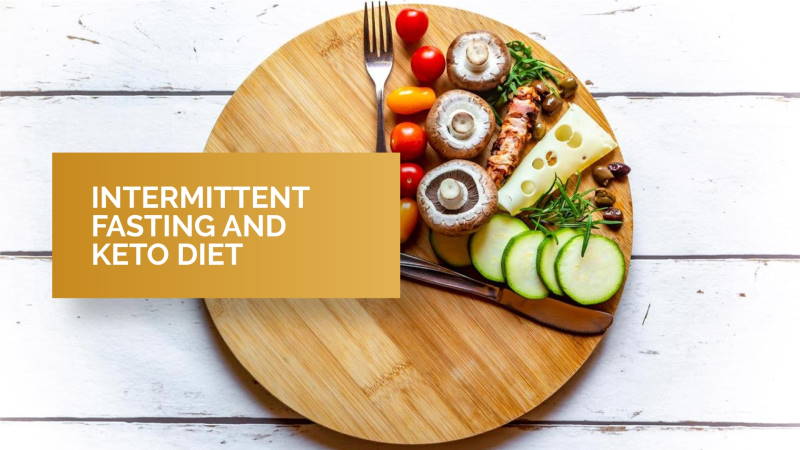
Intermittent Fasting Paired with a Keto Diet
Intermittent fasting is another eating plan which involves rotating between periods of eating and fasting.
One benefit of pairing intermittent fasting with a ketogenic diet, is that it could bring your body into ketosis faster by switching your body’s primary energy source from sugar and carbs to fat.
Additionally, intermittent fasting may also help heighten fat burning by increasing your metabolism.
There are several methods of intermittent fasting, which all have different hours of fasting and eating. The most popular method is the 16/8 method. This method limits your food intake to an 8-hour window each day while fasting for the remaining 16 hours.
What to Expect
Weight Loss & Water Loss:
Weight loss on any diet is very dependent on your body type, weight, height, your exercise level, and intensity, as well as the specific meal plan, you’re on.
Depending on your size and how much water weight carrying, weight loss can vary.
People usually report losses within the first week of anywhere from 1kg to 5 kgs. However, if your BMI is above average then the water weight, you’re likely to lose after starting keto may be higher than average.
There are many factors that can cause minor or major fluctuations in your body weight, such as the food that you eat or drinks that you consume during the day, and whether your body is retaining extra water or not.
So, if the number on the scale isn’t moving, you might still be losing weight or body fat. Weight on the scale is not the only measurement that you can use to justify your weight loss.
Weight Loss Plateau
A plateau is a term which describes a halt in your weight loss. If you are on a meal plan and experiencing a period of weight loss, followed by a period of no weight loss, it is described as a plateau.
Weight loss is not always a linear process and experiencing a plateau is common.
This happens when your metabolism slows downs as you lose weight, meaning that you begin to burn fewer calories throughout the day.
Curbing a Weight Loss Plateau:
Weight loss plateaus are especially common on a ketogenic diet and can be caused by many factors.
When you start to feel a plateau in your weight loss journey, there are a few things that you can do to curb the plateau and get back on your weight loss journey.
- Switch up your exercise routine
- Decrease your calorie intake, slightly
- Reduce stress levels
You can also try several strategies, including intermittent fasting, cutting your carb or calorie intakes, exercising more, and reducing your stress levels, to help break your plateau.
| Keto-Friendly Foods | Foods to Avoid |
| Meat | Sugary foods and drinks |
| Fatty fish | Grains and starches |
| Eggs | Fruit |
| Butter, cream, cheese | Beans and legumes |
| Nuts | Low fat or diet foods and drinks |
| Seeds | Condiments or sauces |
| Avocado | Alcohol |
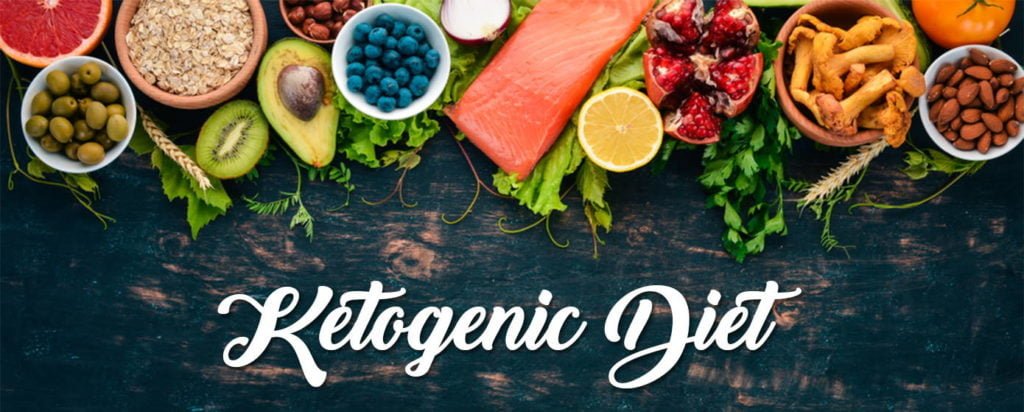
Keto Flu:
Keto flu is a collection of symptoms that you may experience while on the eating plan, which are associated with the body adapting to a ketogenic diet. Keto flu or carb flu is a term given to the experience of symptoms.
Although this eating plan is considered safe for most people, it is still associated with some unpleasant side effects which you may experience.
Causes:
Reducing your carb intake forces your body to burn ketones for energy instead of glucose (ketones are by-products of fat breakdown and become the main fuel source when following a ketogenic diet).
Normally, fat is reserved as a secondary fuel source to use when glucose is not available. This switch to burning fat for energy is called ketosis.
This drastic reduction can come as a shock to the body and may cause withdrawal-like symptoms, which has been termed keto flu or carb flu.
Symptoms:
Switching to a very low-carb diet is a major change, and your body may need time to adapt to this new way of eating.
These symptoms, which can feel similar to the flu, are caused by the body adapting to a new diet consisting of very little carbohydrates. For some people, this transition period can be especially difficult, and signs of the keto flu may start popping up within the first few days of cutting back on carbs.
Symptoms can range from mild to severe and vary from person to person. Some people may transition to a ketogenic diet without any side effects, while others may experience more symptoms
• Nausea
• Vomiting
• Constipation
• Diarrhoea
• Headache
• Irritability
• Weakness
• Muscle cramps
• Dizziness
• Poor concentration
• Stomach pain
• Muscle soreness
• Difficulty sleeping
• Sugar cravings
While these side effects may cause some dieters to throw in the towel, there are ways to reduce them.
How to Reduce Keto Flu?
Luckily, there are ways to reduce its flu-like symptoms and help your body get through the transition period more easily.
Stay Hydrated:
A keto diet can cause you to rapidly shed any water you may have stored which increases your risk of dehydration. Staying hydrated can reduce some symptoms such as fatigue and muscle cramping.
Replacing fluids becomes even more important if you are experiencing diarrhoea, which can cause additional dehydration.
Avoid Strenuous Exercise:
Fatigue, muscle cramps and stomach discomfort are common in the first week of following a ketogenic diet, so it may be a good idea to give your body a rest from any additional stressors such as strenuous exercise.
While strenuous exercise should be avoided, it is also important to note that some types of less-strenuous exercises may reduce some of the feelings or symptoms associated with keto flu. This includes light activities like walking, yoga, or leisurely biking.
Replace Electrolytes:
Replacing your electrolytes may help reduce keto-flu symptoms. Getting adequate amounts of these important nutrients is an excellent way to power through the adaptation period of the diet.
We have a blog explaining more information about electrolytes and dehydration while keto fasting, check it out here
Get Adequate Sleep:
Fatigue and irritability are common complaints. Lack of sleep causes levels of the stress hormone cortisol to rise in the body, which can negatively impact mood and make keto-flu symptoms worse.
Ensure You are Getting Enough Fats & Carbs:
Eating enough fatty foods, which is the primary fuel source on the ketogenic diet, will help reduce cravings and keep you feeling satisfied. Slowly cutting back on carbs, while increasing fat and protein in your diet, may help make the transition smoother and decrease keto-flu symptoms.
Maintenance
Once you have completed the ketogenic diet and hopefully achieved the results you aimed for, there is a need to follow a maintenance plan afterward to ensure you do not dive straight back into nasty eating habits and unhealthy foods. There may be a whole bunch of ingredients and meals that you gave up on for the diet, which you may want to return to when you’re done, and this will have a negative effect on the results you just achieved. Maintenance should include gradually increasing your carbohydrate consumption and adding more protein into your new lifestyle.
Fit Food 4U offers a wide variety of low-carb meals to create a healthy lifestyle for you! From beginning to end Fit Food 4U has it all covered. Fit Food 4U has a wide variety of packages which can allow for an easy transition into different eating plans, as well as the eating plans themselves, in addition to maintenance packages for you to purchase when your meal plans are over.
References
Kubala, J. (2019, April 3). The Keto Flu: Symptoms and How to Get Rid of it. Retrieved from HealthLine: https://www.healthline.com/nutrition/keto-flu-symptoms
Kubala, J. (2020, January 7). Why is the ketogenic diet good for you? Retrieved from Medical News Today : https://www.medicalnewstoday.com/articles/319196
Link, R. (2021, March 8). How to Break a Keto Weight Loss Plateau . Retrieved from Healthine: https://www.healthline.com/nutrition/weight-loss-plateau-keto
Mawer, R. (2020, October 22). The Ketogenic Diet: A Detailed Beginnger’s Guide to Keto. Retrieved from HealthLine: https://www.healthline.com/nutrition/ketogenic-diet-101
Shoemaker, S. (2020, December 18). How Much Weight can you Expect to Lose After 1 Week on Keto? Retrieved from Healthline: https://www.healthline.com/nutrition/keto-weight-loss-first-week



